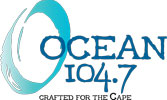The Cape Symphony Orchestra presents “Pictures at an Exhibition” on Saturday, September 21, 2024 at 7:30 PM, and Sunday, September 22, 2024 at 3:00 PM at the Barnstable Performing Arts Center.
Cape Symphony
Jean-Claude Picard, Guest Conductor
Hyunah Yu Brody, Soprano
Cape Symphony Orchestra Musicians
Table of Contents
Tickets for “Pictures at an Exhibition”
Program
Please note the program is subject to change.
JOHN ADAMS (b. 1947)
Short Ride in a Fast Machine
GABRIELA LENA FRANK (b. 1972)
Elegía Andina (Andean Elegy)
RICHARD STRAUSS (1864-1949)
Vier letzte Lieder (Four Last Songs)
Intermission (20 minutes)
MODEST MUSSORGSKY (1839-1881)
Pictures at an Exhibition, arr. Ravel
About Today’s Program
“These pieces collectively explore the breadth of human experience in ways that are both profound and relatable,” says conductor Jean-Claude Picard. “Each work, in its own unique way, tells a story—one that resonates with our shared emotions and memories. They encompass the full spectrum of what it means to be alive: from the exhilarating rush of life’s fast pace, the deep connection to cultural roots, to the acceptance of our vulnerabilities, and the celebration of our inner strength. These works don’t just entertain; they invite us to feel, to remember, and to connect with something greater than ourselves.”
JOHN ADAMS (b. 1947)
Short Ride in a Fast Machine
John Adams is a Grammy award-winning American composer and conductor born and raised in New England. Spanning more than three decades, his works are among the most performed of all contemporary classical music.
Short Ride in a Fast Machine, composed in 1986 for the opening of a Massachusetts music festival, was inspired right here on Cape Cod. In an interview, Adams recalled “…I had been there with a former brother in-law, and he had asked me at about 1 in the morning if I would like to take a ride with him in his Lamborghini. I did, and once he started up I wished I hadn’t because he drove very, very fast. The idea of a piece that had that combination of excitement and thrill and was just on the edge of anxiety or terror was the motivating force.”
He describes the music as follows: “…The piece starts with the knocking of a wood block, which creates a kind of rhythmic gauntlet through which the orchestra has to pass. We hear typical fanfare figures in the brass, but in kind of a ratatat, tattoo, staccato form which really typifies most of the activity of this very fast and very lively orchestral fanfare. Part of the fun of Short Ride in a Fast Machine is making these large instruments, the tuba and double basses, the contra bassoon, the entire brass section, move. They have to boogie through this very resolute and inflexible pulse that’s set up by the wood block. It’s only at the very end of the piece, when the wood block finally stops, that the orchestra suddenly feels free, as if it’s the third stage of a rocket that’s finally broken loose of Earth’s gravity and allowed to float. It’s at that moment that we hear the triumphant real fanfare music in the trumpets and horns.”
Fasten your seatbelts!
GABRIELA LENA FRANK (b. 1972)
Elegía Andina (Andean Elegy)
Gabriela Lena Frank was born in Berkley, California to a Chinese-Peruvian-Spanish mother and a Lithuanian-Jewish father. She describes her childhood as “filled with Chinese stir-fry cuisine, Andean nursery songs, and frequent visits from our New York-bred Jewish cousins.” As a pianist and a composer, her multicultural heritage informs her, inspires her, and brings her joy.
Elegía Andina is a tone poem that evokes the magnificence of the formidable Andes mountains, and both the agitation and calm to be found there. Frank describes it as “one of my first written-down compositions to explore what it means to be of several ethnic persuasions, of several minds. It uses stylistic elements of Peruvian arca/ira zampoña panpipes (double row panpipes, each row with its own tuning) to paint an elegiac picture of my questions. The flute part was particularly conceived with this in mind but was also inspired by the technical and musical mastery of Floyd Hebert, principal flutist of the Albany Symphony Orchestra [which premiered the piece in 2000].” The piece is dedicated to her older brother Marcos.
RICHARD STRAUSS (1864-1949)
Vier letzte Lieder (Four Last Songs)
Früling (Spring)
September
Beim Schlafengehen (At Bedtime)
Im Abendrot (At Sunset)
As his father was Germany’s leading French horn virtuoso, German Romantic composer Richard Strauss had a robust musical upbringing. He became a giant in his own right, renowned for his operas and symphonic poems. Strauss revered both Wolfgang Amadeus Mozart and Richard Wagner; Hector Berlioz and Franz Liszt were also powerful influences.
Four Last Songs are poems set to music, with a beautiful vocal line for a soprano voice and prominent horn parts in the full orchestral accompaniment. Strauss was deeply inspired by the poems of Hermann Hesse, especially Früling, September, and Beim Schlafengehen. Im Abendrot, by Joseph von Eichendorff, resonated with him as well. The poems (except Früling) contemplate death, and these are songs for the loss of a world gone by. The exquisite music is wistful, but suffused with a sense of resolution, acceptance, and peace.
Though he composed them at 84, Strauss did not know that these would be his last completed works. They were titled and published posthumously as a set by his friend Ernst Roth in 1950. Four Last Songs premiered in London that year by soprano Kirsten Flagstad, as Strauss had wished, and the Philharmonia Orchestra. The premiere was backed by the Maharaja of Mysore, India, who wanted it recorded and the recording shipped to him.
Copyright restrictions preclude the reproduction of translated lyrics for the songs in these Show Notes, but they can be found online at www.lieder.net.
~ Intermission ~
MODEST MUSSORGSKY (1839-1881)
Pictures at an Exhibition, arr. Ravel
Promenade
- Gnomus (The Gnome)
Promenade
2. Il Vecchio castello (The Old Castle)
Promenade
- Tuileries (Dispute d’enfants après jeux) (Children’s Quarrel after Games)
- Bydlo (Cattle)
Promenade
- Ballet of the Unhatched Chicks
- Samuel Goldenberg and Schmuÿle
- Le marché (La grande nouvelle) (The Market (The Great News))
- Catacombae (Catacombs)
Cum Mortuis in lingua mortua (With the Dead in a Dead Language)
- The Hut on Fowl
- The Great Gate of Kiev
Russian composer Modest Mussorgsky was an innovator of the Romantic period. Born to nobility, his musical education began early. He attended an elite military school in St. Petersburg, where he also studied piano and met prominent Russian composers of the day. At nineteen, Mussorgsky resigned his Imperial Guard commission to pursue a life in music, eventually supporting himself (with difficulty, family fortunes having vanished with the freeing of serfs) as a civil servant. Mussorgsky’s later life was dominated by isolation and alcoholism, from which he died, destitute, at 42.
Much of Mussorgsky’s work was inspired by ordinary Russian life, history, and folklore. Thought by the government to be an extremist, he was one of the group of composers known as “The Five” who together created a distinct Russian style of classical music.
Pictures at an Exhibition (1874) is a musical depiction of an exhibition of artwork by Mussorgsky’s close friend Victor Hartmann, who had died suddenly the previous year. It was written as a piano suite in ten movements with a recurring Promenade theme. Nikolai Rimsky-Korsakov first published the suite in 1886, five years after Mussorgsky’s death. It was adapted for a full orchestra in 1922 by French composer Maurice Ravel, commissioned by conductor Serge Koussevitzky. Koussevitzky conducted the first performance of that arrangement in Paris in 1922, and made the first recording of it in 1930 with the Boston Symphony Orchestra.
Each movement of the suite is based on one of Hartmann’s works. Listening to Pictures at an Exhibition, you are strolling (“Promenade”) an aural gallery, taking in both the art and Mussorgsky’s loving homage to his friend.
The subjects of the pictures, and so the movements, range from the bucolic to the bizarre. “Gnomus” is about a sketch of a wooden nutcracker in the form of a gnome who cracks nuts in its jaws. The drawing, like others of these works, is lost to time. “Il veccio castello” portrays Hartmann’s castle in Italy. “Tuileries” evokes children frolicking and quibbling in the famous Paris garden. In “Bydlo,” a peasant drives a lumbering oxcart; “Ballet of the Unhatched Chicks,” inspired by Hartmann’s costume design for the Russian ballet Trilbi, moves us to the henhouse. “Samuel Goldenberg and Schmuÿle” were not in Mussorgsky’s original title, which was “Two Polish Jews, One Rich, the other Poor.” The music evokes haughtiness and subservience accordingly. Commercial hustle and bustle are depicted in “Limoges, the Market Place,” followed by a shadowy trek through ancient Roman “Catacombs” beneath Paris, and a mournful version of the Promenade. “The Hut on Fowl’s Legs” is about a picture of the witch Baba Yaga in a hut supported by (yes) chicken legs. Hartmann’s resplendent design for “The Great Gate of Kiev” concludes the piece with Russian grandeur.
English rock group Emerson, Lake & Palmer performed an arrangement of Pictures at an Exhibition in 1971, and released it on an album of the same name. The album hit number 10 on US charts. Elements of the suite have also been performed by heavy metal bands, electronic music composers, and on Michael Jackson’s HIStory album.
Tickets for “Pictures at an Exhibition”
“Pictures at an Exhibition” will be performed at the Barnstable Performing Arts Center, 744 West Main Street, Hyannis on Saturday, September 21, 2024 at 7:30 PM and Sunday, September 22, 2024 at 3:00 PM.
For more information and to purchase tickets if available, visit capesymphony.org, call the Box Office at 508.362.1111, email
Only tickets purchased on Cape Symphony’s secure website, www.capesymphony.org, or through the Cape Symphony Box Office are legitimate and guaranteed. Exchanges or credits will only be honored for tix purchased on this Cape Symphony website or through the Cape Symphony Box Office. See our ticket policies.
Behind the Scenes
Cape Symphony Board of Trustees and Staff
Thanks to earbox.com, the official John Adams website; Runyan Program Notes; Encyclopedia Brittanica; Wikipedia; Joe Marchio.



























